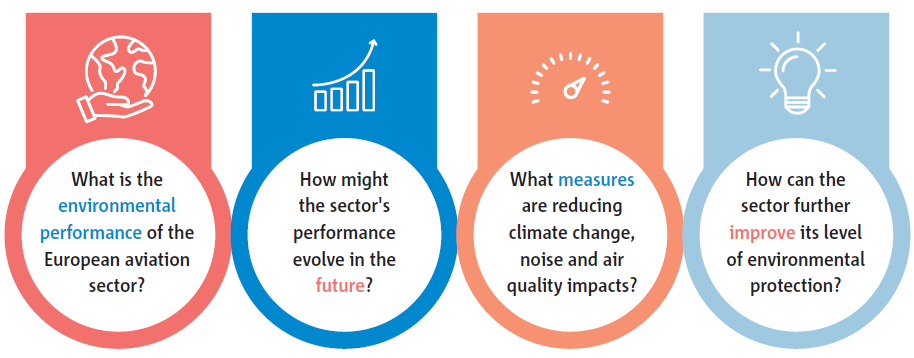Welcome to the third European Aviation Environmental Report (EAER)! The core aim of this report is to provide an objective, clear and accurate source of information on the environmental performance of the aviation sector at the European level every three years.
Europe’s aviation sector is strategically important and provides significant benefits through connectivity, employment and the wider economy. However, this license to operate is dependent on its ability to address the negative effects (noise, air quality and climate change) of its business on the health and quality of life for European citizens. This is especially so on climate change, which is considered by Europeans to be the single most serious problem facing the world
. Consequently, environmental protection is a key strategic priority for the aviation sector, where the future of the industry will depend on how it reacts to the climate crisis during this decisive decade.
Aviation Warming Stripes
Based on a recent study that quantified aviation’s contribution to global warming
, the below aviation ‘warming stripes’ have been developed with the aim of communicating a complex message in a visually simple and memorable way that people can relate to. Warming stripes typically communicate on the impact of global warming in terms of changes in average surface temperature over time at the global or national level . In comparison, the colours of the aviation warming stripes below represent the modelled % contribution of aviation emissions to overall global warming (temperature increase against a pre-industrial baseline) on an annual basis between 1980 (1.9% on left) and 2021 (3.7% on right).
The race to net zero aviation CO2 emissions through a recent multitude of State and Industry commitments underlines the urgency
, and these emissions reductions now need to be delivered to ensure the Paris Agreement target of limiting the temperature increase to 1.5°C remains a possibility. Harnessing public and private finance to put into action this shared vision and goal is imperative.The EAER acts as a reference document by monitoring past performance and forecasted future developments to inform strategic discussions on progress towards agreed goals and how the environmental performance of the aviation sector can be improved. This supports the prioritisation of future work and resources (policy, legislative, operational, research) to effectively coordinate a comprehensive approach across different initiatives and address the issue of sustainability, which is the defining challenge for aviation in the 21st Century.
Innovative and smart solutions on environmental sustainability have historically been driven by Europe, both at a regional and global level. The changes resulting from the green transition will include some turbulent times, but it is also an opportunity for the European aviation sector to position itself such that it increases its competitiveness in this new green economy. Continued active engagement will also be required to attract the next generation of highly skilled personnel needed to develop and implement these solutions to the environmental challenges. The status in this on-going transition is summarised in the various Chapters of this report.


